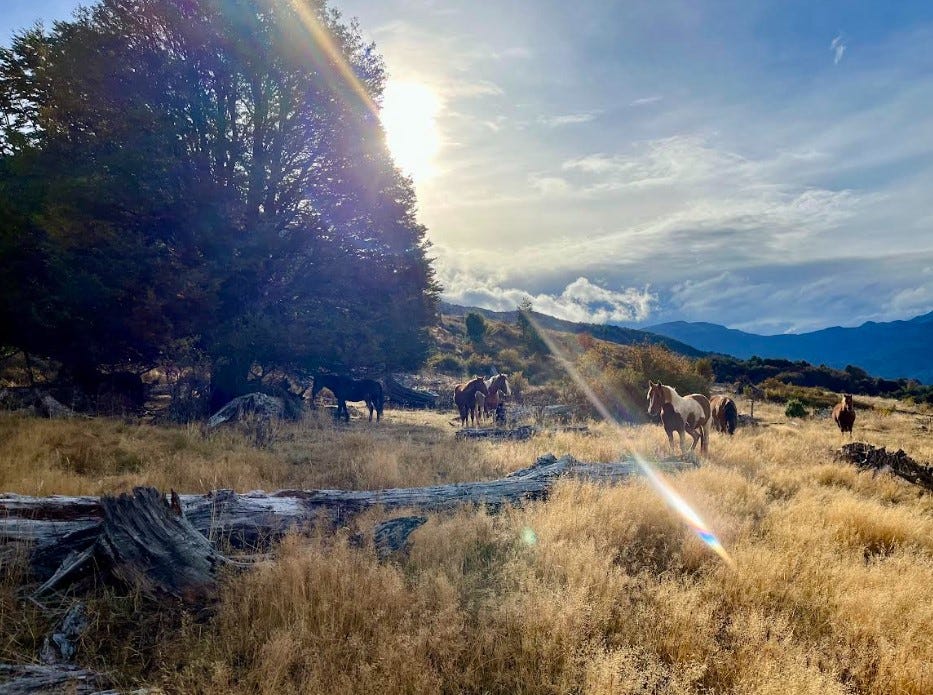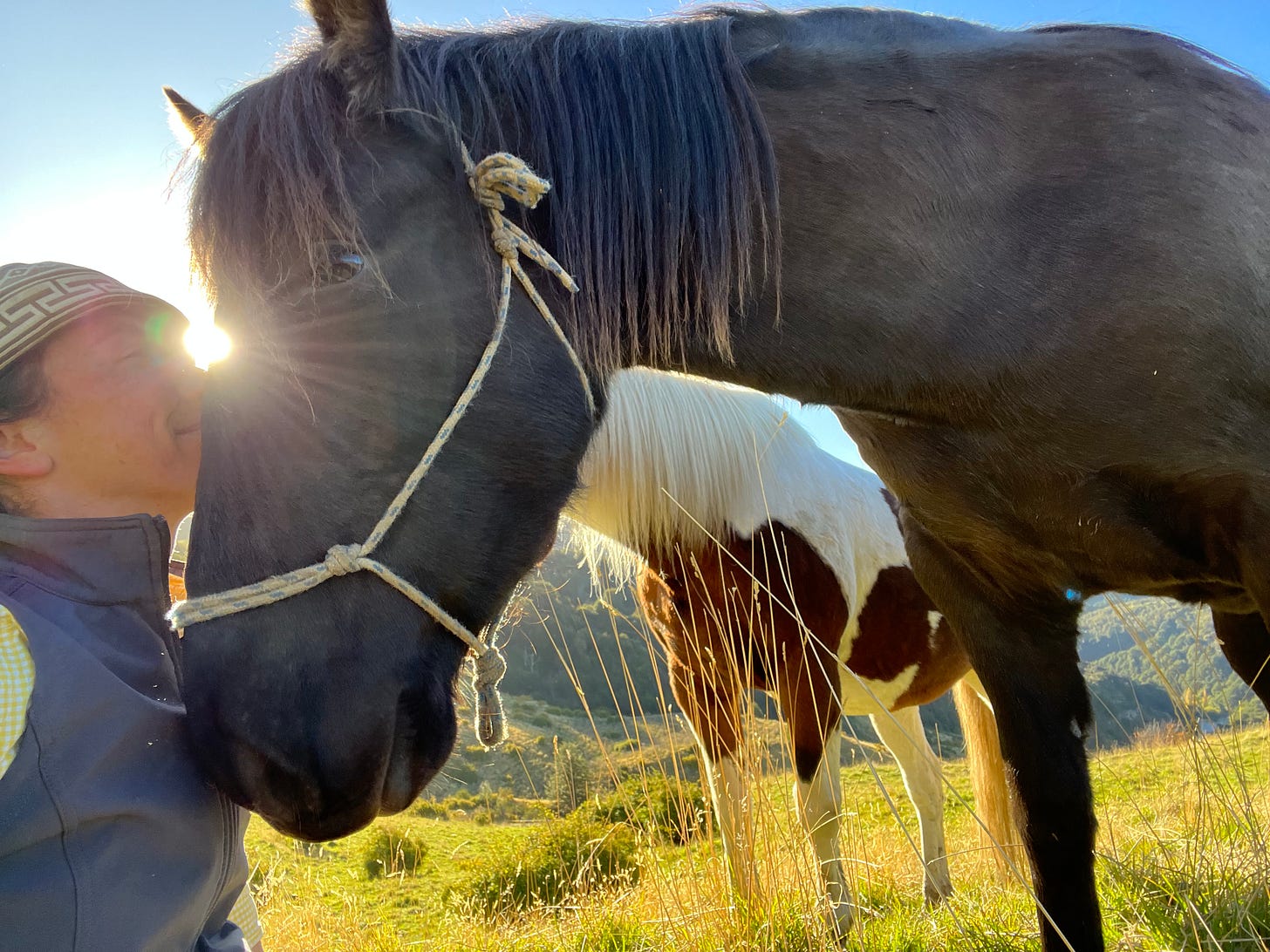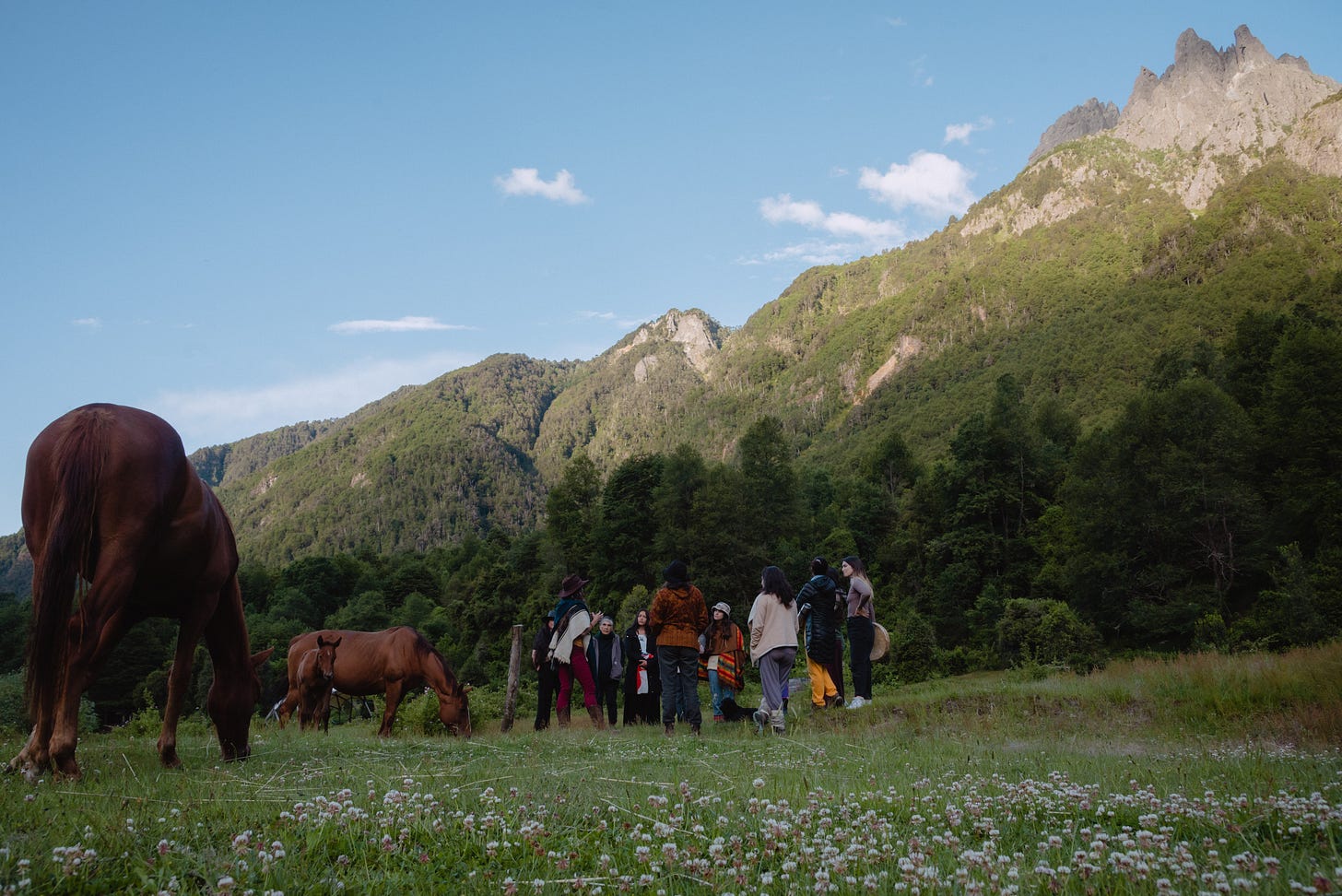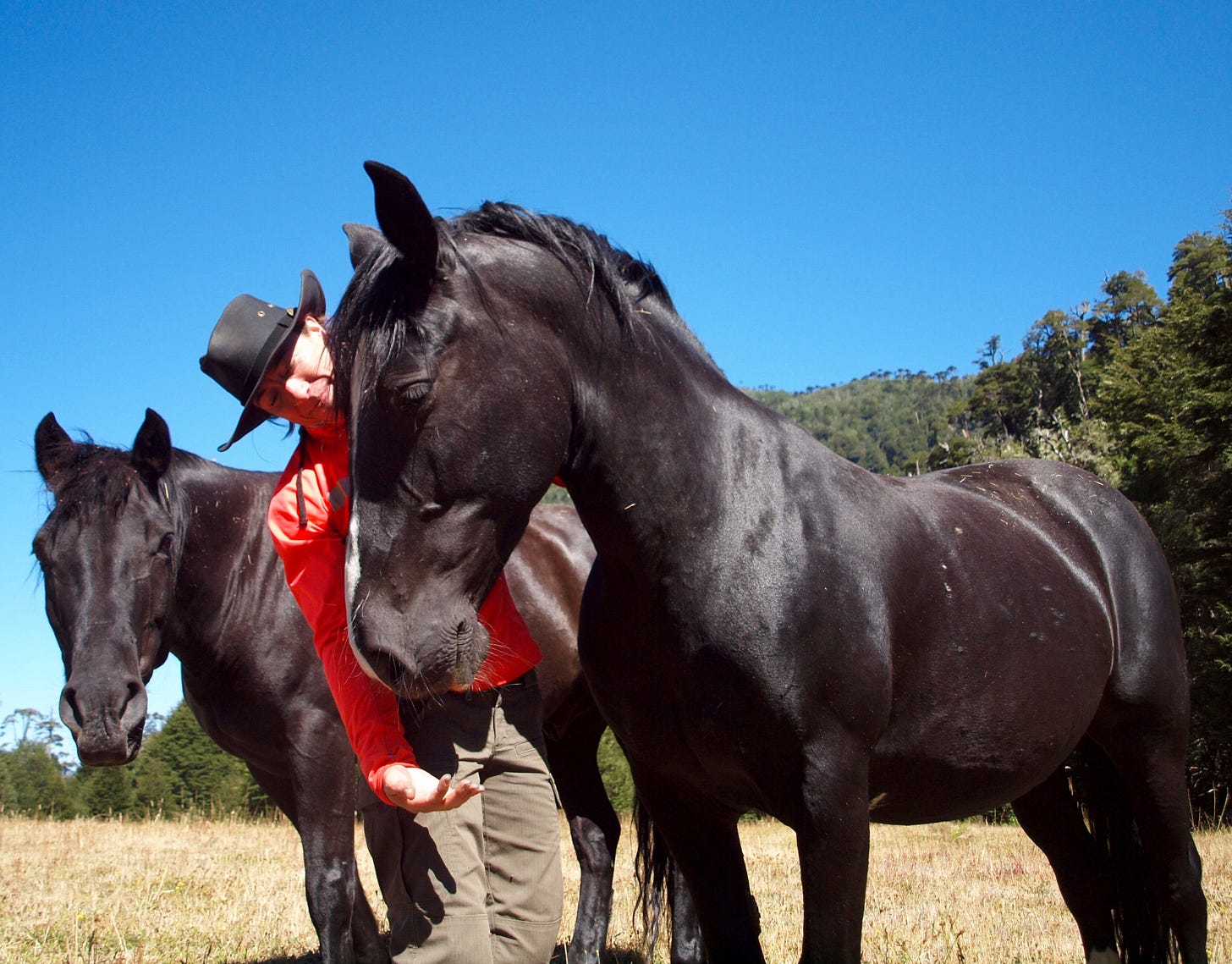“And so when we’re approaching a herd, we pause and we breathe. And then we’re acknowledging to them that we feel them feeling us. And then they can settle in to us being so close. And it’s this dance.” — Greta Franklin Matos.
Resonant World #137
The voices of the land, the wind, and the trees probably weren’t directly audible during our call — though their presence was palpable.
The Patagonian backdrop to my conversation with
transmitted such a powerful energy that we might have spent our hour together hiking in the bracing mountain landscape, instead of talking through a screen.I’d been curious to learn about Greta’s work with horses at her CuraKuda organisation in Chile since we connected via our mutual friend Lisa Schwarz, whose CRM Foundation we’re both serving as board members.
I was also intrigued by Greta’s experience of a “gravitational pull” that had led her from her early corporate career in Asia to her vision at CuraKuda, which she co-founded after a five-month odyssey riding three horses across Patagonia with her husband Alejandro nine years ago.
“We lived on horseback and we really dove into a life in partnership, in equal partnership with the horses,” Greta told me. “And in that journey, we then moved into a life where more horses came to us, and all of a sudden we were looking at one another and the question came of how can we create something together that is in service to the well-being of the horses, to the well-being of the land, and to the well-being of the soul?”
CuraKuda now welcomes groups from around the world seeking to develop the relational skills and resilience needed to navigate the world of today, welcoming participants from the private sector, nonprofits and other backgrounds.
Drawing on her past experience of working to improve supply chain ethics, Greta has a particular skill at facilitating “corporate shadow work” — supporting organisations to confront their complicity in harmful practices in a way that’s sensitive to the many layers of trauma that employees carry.1
‘Mirroring Our Awareness’
Our conversation also gave me an even deeper appreciation of the healing intelligence that sparks into life when people come into attuned relationship with horses — a phenomenon I’d first encountered a decade ago, when writing about British military veterans experiencing deep release from trauma at an equine-assisted learning centre run by Sun Meyer in East Sussex.2
Growing up in Pennsylvania, Greta had been drawn at young age to work with horses who had suffered severe trauma at the hands of their owners. When horses came back into her life in Chile, she recognised their enormous capacity to help people come into contact with the depths of grief and trauma habitually suppressed below conscious awareness.
Greta also began to learn how the horse-human dynamic can work at a collective level between groups of people and herds — casting some of the principles of collective and inter-generational trauma integration I’ve been studying with Thomas Hübl and team in a new light.
“And so you move with the herd and you witness them, but you go beyond just watching them. We’re not just observing them. We learn the language of our own bodies by listening to their mirroring our awareness,” Greta explained.
“And so that’s where they can be very powerful collaborators, because sometimes with human-to-human, we can tell ourselves it’s a projection, or we can tell ourselves someone’s judging — the resonance can be interrupted by our story.
“And what I found with the horses is that people are much more accessible to themselves because the resonance is more palpable, and you almost can’t argue with it like you can in a human dynamic.”
I also loved how Greta expanded the concept of “collective” to include the “earth body,” which she senses as a conscious participant in her work at CuraKuda — an echo of the sentience of the land emphasised by Kritee (Kanko), the Zen Buddhist priest and climate scientist who spoke on the Resonant World podcast last month. (Resonant World #133: Kritee (Kanko) on Finding Courage).
“The land is continuously witnessing and participating in holding what is in our collective, in all moments,” Greta said. “And we often forget that because we only focus, we tend to focus, on what we do to the land, or what we’ve done to the land. And actually it’s here and it’s presencing with us always. And when we acknowledge that, then we’re stepping fully into its embrace. That is the collective healing.”
I hope you enjoy the above recording of our conversation, and you can read more about Greta’s work at her inspiring newsletter
.This episode aims to:
Share the essence of Greta’s remarkable story
Convey some key principles of healing with horses
Explore the role of the other-than-human world in collective healing
Ideas that intrigued me:
Land as a conscious participant in healing processes
The term “corporate shadow work”
The “gravitational pull” that seemed to guide Greta
Questions I was left with:
How can I organise a visit to CuraKuda with Matilda and Genevieve!?
How can I learn more about human-animal resonance?
How can I develop my capacity to attune to the land?
Transcript:
Related Resources:
About Greta Franklin Matos:
Greta Franklin Matos is a writer, mother, horsewoman, explorer, and Wholehearted Regenerative Business Advisor composing a purposeful life in the heart of Patagonia.
Show Notes:
01:32 — Collective healing as shared presence
02:52 — Participation of the land in collective healing
04:39 — Following the “gravitational pull” to Patagonia
06:09 — Choosing a path grounded in the heart
07:55 — Origins of working with the herd
08:43 — Horses as portal to collective and ancestral trauma healing
11:07 — Early life working with traumatised horses
12:03 — Significance of horses’ heightened sensitivity
14:04 — How horses mirror our vibrational awareness
14:59 — The palpable equine resonance field
17:23 — Memorable human-horse encounter in wild weather
23:10 — Relationship with the land
25:15 — The “earth body’s” desire to collaborate with us
26:05 — Referencing Kritee’s (Kanko) work on reindigeneity
27:09 — Connecting with nature where we are now
29:07 — Quitting an early job in product development for ethical reasons
35:53 — Corporate “shadow work” of confronting abuses in supply chains
38:11 — Call to bring the spirit of the work back into corporate spaces
41:49 — “Trauma-aware auditing”
48:06 — Where are our “wellsprings of joy?”
49:55 — Tending to the light within
52:31 — Sensing that the nearby trees are in agreement
53:47 — Remembering the collaboration coming from the unseen
If you found value in this interview, I warmly invite you to subscribe to Resonant World to receive more dialogues — and join the Resonance Council, a community comprised of several dozen paid subscribers who form the energetic foundation of this initiative to build a trauma-integrating media system. Thank you. 🙏
Greta’s approach felt to me to be very resonant with the work of Amy Elizabeth Fox, chief executive of Mobius Executive Leadership, whose work I wrote about in Resonant World’ sister publication Toxic Workplace Survival Guy last year. (Survival Tool #17: Hold a Vision).


















Share this post